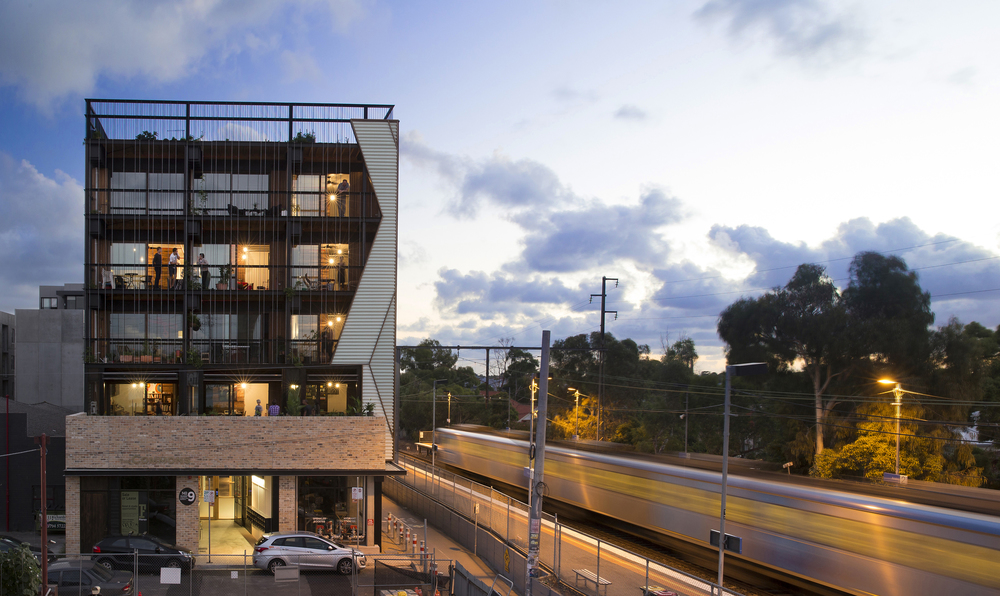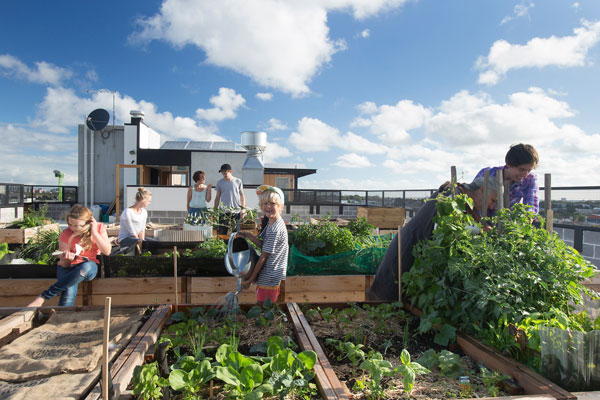
Environment
Podcast: How do we become an ecocity?

We need to rethink the concept of a sustainable built environment, and find ways to make society better, not just less bad, says Dr Dominique Hes
Published 25 July 2016
Thrive Hub is a community of researchers working from the core belief that to face change successfully, we need to move beyond the concept of sustainability in relation to the built environment, and think about ways our society can not only survive, but thrive.

Environment
Podcast: How do we become an ecocity?
We established Thrive Hub in the Melbourne School of Design where we could tackle industry-relevant research on design and innovation for sustainable, thriving, built environments. Its mission is to carry out applied trans-disciplinary research to investigate thriving in cities and develop real world solutions for the built environment. Thrive’s key focus is to develop new knowledge in the theme areas of buildings, people and ecosystems in cities.
We don’t see thriving as being about liveability, which has lifestyle connotations. Design in support of thriving poses the question: how do we create a built environment that allows everyone – including nature – to be the best they can be? How does nature become an integral part of our thinking, and not something we consider ‘if we have the budget’?
Everyone has a different definition of sustainability and different focus: are we trying to be sustainable ecologically, or economically, or socially? At the end of the day sustainability is about keeping things the same. I’d rather see us thriving and growing. I mean, would we be happy with a ‘sustainable marriage’? That sounds a bit boring. Do we want a sustainable society? Let’s try a bit harder and make it enriching and nurturing!

Health & Medicine
(Don’t) always look on the bright side of life
After 20 years of sustainability practice, I’ve come to realise that sustainability depends on everyone contributing to build the social capital as well as environmental capital. It’s time we as humans start asking ourselves what we can do to make things better for each other and the world, not just less bad. My book with Chrisna Du Plessis, Designing for Hope, gives a lot of examples of projects that have been designed for ecological and social benefit. We shouldn’t be afraid to acknowledge that a building will have an environmental impact, but also a benefit. We wouldn’t be building it otherwise. But we need to maximise our benefit from the investment of impact.
I think politicians and policy makers are probably doing the best they can within their vision of what success looks like. Unfortunately that’s not what Australia needs, which is the ability to make decisions and stick with them. Put in a carbon tax. Stick to it. If you’ve got a good reason to do something, then do it. Plan for clean air, plan for energy, plan for our forests, plan for our infrastructure. Plan for things to help us thrive, but let them have their intended effects. Unfortunately we’re seeing the opposite. Every three or so years a new group of politicians criticise the policies of the previous government, and undo potential benefits. The environment, both natural and built, is sacrificed to political competition.
The key to shifting the community’s attitude to development is to change the story, or the model by which we arrange our communities: people need to stop thinking about taking from our world, community, economy, environment, and to start giving to it. The way to increase the capacity of the system is to contribute to it: when we increase the capacity of the system, we are able to constructively adapt to change.

The sustainability challenge overwhelms most of my students. They say: “It’s so hard, we are so powerless.” I tell them the story of the hummingbird, which is a parable from the Peruvian Alps. The story goes: there’s a bushfire, and the animals are looking at the fire saying ‘oh no, our houses are going to burn down, we’re going to die, what are we going to do?’ But the tiny hummingbird goes to the river and picks up little drops of water, which he puts on the fire one by one.
The animals say ‘you’re crazy, what are you doing, you’re just a little hummingbird, you have no power’. The hummingbird says ‘I’m doing what I can.’ Traditionally the parable goes that a mighty being comes down and puts out the fire. But I don’t like that version, so I change it, and finish by saying, ‘and then all the animals say ok, lets all band together to put out the fire’. The point being: do what you can. Help a neighbour across the road, pick up a piece of rubbish, incorporate a childcare centre into a new development. Because it might make someone’s day, and it all adds resilience to the system and actually means we all will receive benefit, and the community will thrive.
Banner image: The Commons by Breathe Architects. The Commons is an example of architects challenging the way we do things to provide examples of new practice that is about creating thriving for a place and its people. Picture: Andrew Wuttke.